How to encourage wildlife into your outdoor spaces
Earthwatch Europe
Partner organisation of the Watches
By Kirsty Crawford, Citizen Science Projects Officer– The Conservation Volunteers / Earthwatch Europe
During the lockdown period in the UK, we may have been looking for somewhere to focus our energy, take in some fresh air or have a mini outdoor adventure - enter, the humble garden. From expansive green havens to small square patios, gardens in the UK cover a huge combined area, nearly 430,000 hectares (that’s almost double the size of Luxembourg!).
Your garden could hold the key to reversing wildlife decline. Connected urban gardens would allow wildlife to move freely through the landscape. As many of us find ourselves spending more time at home, nature continues to thrive all around and there are a few simple steps we can take to turn our back yard into a buzzing nature-friendly haven.
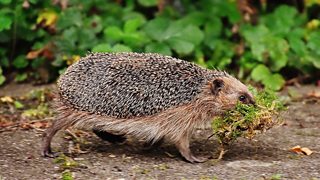
As our Naturehood community wildlife project expands into Glasgow, the first Scottish city to be a part of the initiative, we need help to document the small nature events happening in your garden – from every corner of the UK. Naturehood is a citizen science project which supports communities to act positively for wildlife. We encourage individuals to think about their gardens and green spaces as areas where both people and wildlife can thrive, and implement wildlife-friendly actions to boost biodiversity. We call these . Signing up to Naturehood is free, and helps our scientists at Earthwatch Europe with research into the use of urban gardens for wildlife.
Size doesn’t matter
Regardless of the outdoor space you have available (and writing as someone who lives in a busy area of Glasgow with a concrete communal ‘garden’), you can still take part and be a valuable member of the Naturehood community. From window box to balcony, allotment to vegetable patch, only you know your own garden, or have the power to implement a few simple changes to benefit native species.
Small nature-focused changes in your outdoor space can lead to multiple benefits for our key five, and many other species. Here are a few quick ways to get started:
1. Beyond the boundary

Your garden can act as a boundary in otherwise open space to the wildlife which may be attempting to use it. Of course, you’re only distinguishing your own space from that of next-door with a gate or a fence, but can be an easy way to link up small natural areas to provide a larger network of routes for wildlife to find shelter, food and potential mates.
Hedgehogs roam an average of one mile each night looking for food and need to be able to move freely in an area much larger than the average garden. Frogs and toads migrate from terrestrial habitat to their breeding ponds in the spring and creating a passageway enables them to move safely between these areas to breed successfully. A CD-case sized hole (13cm x 13cm) will be perfect, and not too large for pets to escape through.
2. Gimme shelter
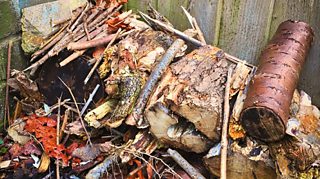
Throughout the year species rely on natural habitat to provide shelter, nesting and hibernation opportunities. Once of the most simple ways to help is by creating log & leaf piles and establishing a compost heap. Don’t be too quick to tidy up in the garden.
An undisturbed pile of leaves provides excellent natural nesting habitat for hedgehogs and bumblebees. A small log pile in a damp, shady area can create excellent feeding opportunities by supporting various invertebrates and offer refuge for small mammals, amphibians and reptiles.
As well as creating a source of rich compost for your garden, heaps can provide for garden wildlife, be careful when turn over your compost heap as hedgehogs may be nesting inside.
3. Pollinator power
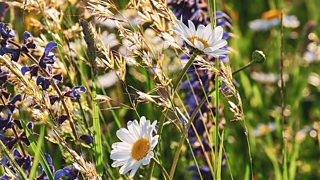
Your garden can be a stopover destination for pollinators such as bumblebees and butterflies, not somewhere to fly over. Gardens provide stepping stones between larger areas of habitat, linking up local nature reserves, parks and other gardens. The small tortoiseshell butterfly has seen a population decline of 73% since the 1970s and two bumblebee species have become extinct in the UK just in the last 30 years. Linking corridors help pollinator populations become more resilient, provide them with more opportunity for food, and enable them to access more suitable habitat in which to reproduce.
Instead of short uniform grass, try and establish a flower-rich lawn. Leave more time between mowing and let the grass grow wild, experiment with longer areas where wildflowers will naturally grow.
Dedicating a small area, even one planter, to nectar and pollen-rich flowers can make a real difference. Try to include a number of different flower shapes, the early bumblebee is one of the first to emerge in the year, usually around April and relies on open flowers like lavender and white clover. Add a mix of perennials that flower at different times of the year to make sure that there’s pollen across the seasons, especially early in spring and autumn when there is less around. Take a look at our guide to
4. Spray no more
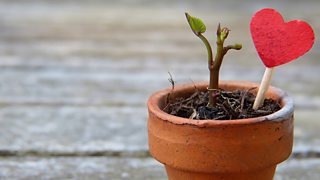
Pesticide use has caused a decline in insect numbers, which has had a knock-on effect on the populations of various bird species, such as house sparrows. The easiest thing to do is reduce, or even avoid altogether, the use of pesticides. You could also replace them with a .
Consider companion planting to deter pest insects by planting strongly-scented plants such as marigolds, sage and lavender near your vegetables or flowers. Other plants can be used to distract potential pests. Nasturtium for example can lure butterflies away from laying eggs on your cabbages and act as ‘sacrificial plants’.
5. If a tree falls in your garden and no one is around to see it…
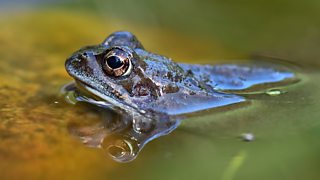
Did it really fall at all? Please help us by telling us about your garden. What flowers do you already have? Do you have a mini-pond? Did you leave your lawn to grow long this year? By logging the actions you take, or the features you may already have, you help our scientists look at the bigger picture.
By taking part in short wildlife surveys at different points throughout the year, your vital data will assist our research into assessing how important the humble garden is, for connecting habitat and reversing wildlife decline.We’d like to hear from you - in your first survey today.
For more information and to join the community please visit
Ask your questions on getting started with wildlife-friendly garden on our Instagram live Q&A session on Friday 5 June at 3.30pm. Follow @EarthwatchEurope and @Wildscotplace to get involved in the conversation!
